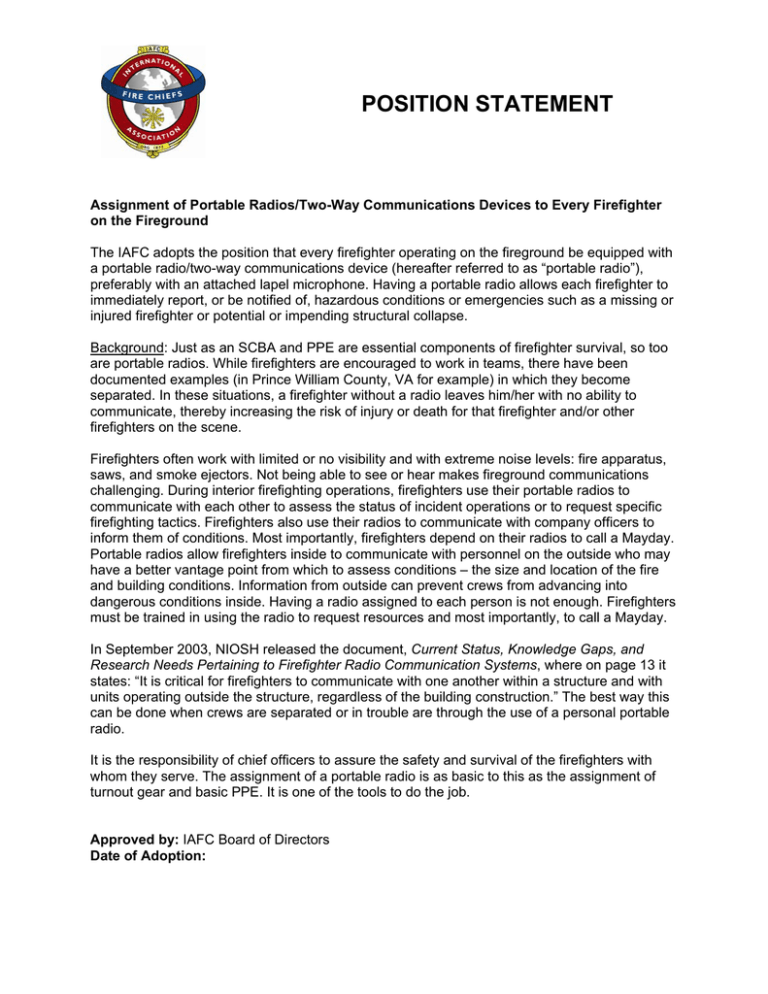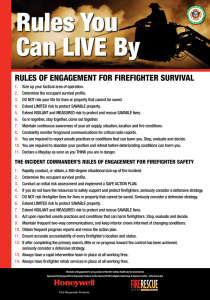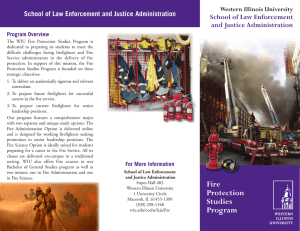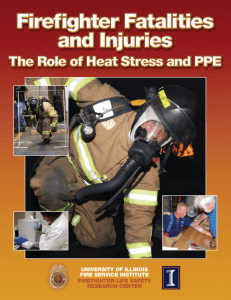POSITION STATEMENT
advertisement

POSITION STATEMENT Assignment of Portable Radios/Two-Way Communications Devices to Every Firefighter on the Fireground The IAFC adopts the position that every firefighter operating on the fireground be equipped with a portable radio/two-way communications device (hereafter referred to as “portable radio”), preferably with an attached lapel microphone. Having a portable radio allows each firefighter to immediately report, or be notified of, hazardous conditions or emergencies such as a missing or injured firefighter or potential or impending structural collapse. Background: Just as an SCBA and PPE are essential components of firefighter survival, so too are portable radios. While firefighters are encouraged to work in teams, there have been documented examples (in Prince William County, VA for example) in which they become separated. In these situations, a firefighter without a radio leaves him/her with no ability to communicate, thereby increasing the risk of injury or death for that firefighter and/or other firefighters on the scene. Firefighters often work with limited or no visibility and with extreme noise levels: fire apparatus, saws, and smoke ejectors. Not being able to see or hear makes fireground communications challenging. During interior firefighting operations, firefighters use their portable radios to communicate with each other to assess the status of incident operations or to request specific firefighting tactics. Firefighters also use their radios to communicate with company officers to inform them of conditions. Most importantly, firefighters depend on their radios to call a Mayday. Portable radios allow firefighters inside to communicate with personnel on the outside who may have a better vantage point from which to assess conditions – the size and location of the fire and building conditions. Information from outside can prevent crews from advancing into dangerous conditions inside. Having a radio assigned to each person is not enough. Firefighters must be trained in using the radio to request resources and most importantly, to call a Mayday. In September 2003, NIOSH released the document, Current Status, Knowledge Gaps, and Research Needs Pertaining to Firefighter Radio Communication Systems, where on page 13 it states: “It is critical for firefighters to communicate with one another within a structure and with units operating outside the structure, regardless of the building construction.” The best way this can be done when crews are separated or in trouble are through the use of a personal portable radio. It is the responsibility of chief officers to assure the safety and survival of the firefighters with whom they serve. The assignment of a portable radio is as basic to this as the assignment of turnout gear and basic PPE. It is one of the tools to do the job. Approved by: IAFC Board of Directors Date of Adoption:




